
by Gert Fischer | Oct, 2025 | Bonn Sights, famous people from Bonn, history, points of interest
In 2025, the Fördergesellschaft für den Alten Friedhof Bonn e.V. (Friends of Bonn’s Old Cemetery Association) celebrates its 50th anniversary. The Bonn Greeters would like to offer their heartfelt congratulations! Through its work, the association makes an important contribution to the preservation and maintenance of one of Bonn’s most significant historical landmarks.
 The so-called ‘Old Cemetery’ is easy to overlook. It is surrounded by walls and squeezed between three main roads and the railway line. Its entrance is at the beginning of Bornheimer Straße, almost directly next to the town hall. When you walk through the gate you enter another world. Graves from times long past lie in the shade of tall trees. Weathered gravestones and rusted wrought-iron crosses dominate the scene. Some are crooked. Many of the graves are obviously no longer maintained and are overgrown. The traffic noise fades into the background and birdsong dominates. It is no wonder that feature films are occasionally shot here. Fog machines are turned on and eerie figures stride through the night. The rattling of the railway is suppressed.
The so-called ‘Old Cemetery’ is easy to overlook. It is surrounded by walls and squeezed between three main roads and the railway line. Its entrance is at the beginning of Bornheimer Straße, almost directly next to the town hall. When you walk through the gate you enter another world. Graves from times long past lie in the shade of tall trees. Weathered gravestones and rusted wrought-iron crosses dominate the scene. Some are crooked. Many of the graves are obviously no longer maintained and are overgrown. The traffic noise fades into the background and birdsong dominates. It is no wonder that feature films are occasionally shot here. Fog machines are turned on and eerie figures stride through the night. The rattling of the railway is suppressed.
The cemetery has been in existence since 1715. At that time, it was located just outside the city fortifications. It owes its triangular layout to the fork in the road where Archbishop Elector Joseph Clemens – better known as the creator of the residential palace, now the university – had it laid out. It was originally intended for soldiers, strangers and poor people, i.e. those whose families did not have graves in the inner-city cemeteries. In 1787, it became the city’s only cemetery: Elector Max Franz closed the parish cemeteries and turned it into a ‘general burial ground’. The reason for this was the realisation that the overcrowded churchyards posed a health risk to the city’s population. In this respect, Bonn was ahead of its time. In most other cities in the Rhineland, such measures were only ordered during French rule after 1794.
The Old Cemetery retained its function as ‘the’ Bonn cemetery until its closure in 1884. From then on, burials were only permitted if the family already had a grave on the site, as there was no more room for expansion. The cemetery was surrounded by buildings on all sides.
An information board at the entrance, as well as the Fördergesellschaft’s website, offer maps and a detailed overview of the VIP tombstones . There is much more to discover than the graves of Beethoven’s mother, Clara and Robert Schumann, Barthold Georg Niebuhr or Ernst Moritz Arndt, because the Old Cemetery reflects the history of bourgeois Bonn in the 19th century. In addition to the graves of well-known and lesser-known Bonn families, the resting places of university professors also play an important role. This part of the cemetery register reads like a “Who’s Who” of the German scholarly world of that time. Scattered across the grounds, we also find traces of the British colony, which was important for the social history of the city. Somewhat hidden away are the graves of French soldiers from the war of 1870/71. Added to this is the art-historical dimension. A tour of the cemetery is always a journey through the representative funeral culture of the 19th century. Particularly important are the cemetery chapel – built in the 13th century as the chapel of the Teutonic Order in Ramersdorf and moved here in the 1840s as an early example of monument preservation – and the former market cross of the medieval market in Dietkirchen in the north of Bonn.
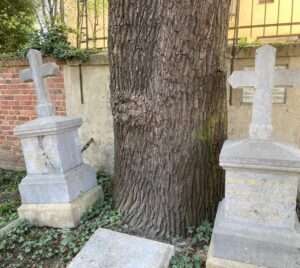 Another treasure of the Old Cemetery is its trees, some of which date back to the 19th century. This is where problems become apparent: in some places, monument preservation and nature conservation compete with each other, as the tree roots threaten historic graves. Nowhere is this more evident than at the grave of Ernst Moritz Arndt, where the oak tree he planted himself almost 200 years ago is in the process of overturning the gravestones.
Another treasure of the Old Cemetery is its trees, some of which date back to the 19th century. This is where problems become apparent: in some places, monument preservation and nature conservation compete with each other, as the tree roots threaten historic graves. Nowhere is this more evident than at the grave of Ernst Moritz Arndt, where the oak tree he planted himself almost 200 years ago is in the process of overturning the gravestones.
Another problem is that the majority of the graves are no longer in use. The families have died out or now bury their members elsewhere. This means that time has practically stood still. This is a major challenge for the city, because although it can preserve the site as a whole, it does not have the resources to maintain the countless unused graves, let alone preserve the gravestones, apart from the graves of honour. On the other hand, ‘clearing’ the graves after the burial periods have expired, as is customary in normal cemeteries, is not an option due to the historical significance of the site and the existing monument protection. The support association helps to solve this dilemma. Among other things, it is responsible for the restoration of graves of historical or art-historical significance.
Another option is the ‘grave sponsorships’ arranged by the support association. In this case, the sponsors take over the maintenance of an abandoned grave, including the restoration of the gravestone, and thus acquire the right from the city of Bonn to be buried in this grave sometime in the future. Not everyone may like the idea of lying under someone else’s gravestone and being limited to a modest stone cushion with their own name on it. And some people also consider it morbid for someone to maintain their own grave during their lifetime. However, my wife and I find it somehow reassuring to know where we will end up – if nothing else comes in between.

by Ursula Dillenburger-Brendt | Oct, 2025 | EN, Events, Music
Telekom Beethoven Competition: 04. – 13. December, 2025
In December, Bonn will once again become the international centre of the piano world. In Beethoven’s birthplace, the renowned Telekom Beethoven Competition is challenging outstanding classical pianists from all over the world aged between 18 and 32 to compete for the top three places for the 11th time since 2005.
An international selection committee headed by Pavel Gililov, artistic director and jury president of the competition, hand-picked the 28 participants in spring 2025. They have been preparing for the competition ever since, as the repertoire is extremely demanding, the requirements and expectations are extremely high, and the competition is fierce. Half of the exceptional talents come from Asia, seven of them from South Korea alone, while Europe is represented by eight candidates, including Jonas Stark from Germany.
 The competition begins in the concert hall of the Telekomzentrale (Friedrich-Ebert-Allee 140, 53113 Bonn) and is open to the public. Every music lover has the fantastic opportunity to attend the competition. Admission is free, only permitted between each audition. And if you have to wait a little while to get in, that’s no problem, as the competition is livestreamed around the world, including to the Telekom lounge, where you can sit down with a cup of coffee and listen.
The competition begins in the concert hall of the Telekomzentrale (Friedrich-Ebert-Allee 140, 53113 Bonn) and is open to the public. Every music lover has the fantastic opportunity to attend the competition. Admission is free, only permitted between each audition. And if you have to wait a little while to get in, that’s no problem, as the competition is livestreamed around the world, including to the Telekom lounge, where you can sit down with a cup of coffee and listen.
In the first round, from Friday 5th to Sunday 7th December, all 28 participants will perform. (Time: 10 a.m. – approx. 9 p.m.) The programme includes a prelude and fugue by Johann Sebastian Bach and one of the last three sonatas, as well as another work by Ludwig van Beethoven. Wonderful piano works, sure to be played beautifully! It’s well worth going along to listen and compare. Don’t forget to keep your fingers crossed! The high-calibre jury will select the twelve most outstanding talents from among the competitors.
In the second round, on Monday, 8th and Tuesday, 9th December, the remaining 12 pianists will be back. (Time: 10 a.m. – approx. 9 p.m.) The competition requires the interpretation of a sonata or variations by Ludwig van Beethoven and a Romantic piano work. The audience, some of whom are very enthusiastic and regularly attend the competition, are now fired up, lively discussions taking place during the breaks about who is the most convincing, and everyone hoping that their favourite will progress. But the jury will decide which six of the participants will be admitted to the semi-finals. The audience will find out the result the next morning.
The semi-final for the six selected contestants will take place on Wednesday, 10 December. (Time: 10 a.m. – 7 p.m.) The programme includes another sonata by Beethoven and a modern work from the 20th century. It’s getting more and more exciting! Only the three pianists who excel in this preliminary round will advance to the next rounds of the competition. They will then have the opportunity to showcase their skills in a different context in two further concerts.
In the chamber music final on Friday, 12 December, the three finalists will perform together with members of the Beethoven Trio Bonn. (7 p.m.) Here they will demonstrate their sensitivity in musical interaction as well as their sense of balance and sound culture. But it begins with a solo performance of a contemporary work from the 21st century, followed by a piano trio by Ludwig van Beethoven performed together with Mikhail Ovrutsky (violin) and Grigory Alumyan (cello). With such contrasting pieces of music, the concert promises to be interesting. Incidentally, the works performed here are the only ones in the entire competition that do not have to be performed from memory. (Tickets are required to attend the chamber music final)
The absolute highlight of the Telekom Beethoven Competition is undoubtedly the orchestra final with the three finalists on Saturday, 13 December. (new venue: Telekom Forum, Landgrabenweg 151, 53227 Bonn, 7 p.m.) Here, the three contenders for the prize will take to the stage together with the Beethoven Orchestra Bonn and each perform a piano concerto by Ludwig van Beethoven under the musical direction of Oksana Lyniv. The exact programme is unknown until then, as the jury will decide which works the finalists will play based on their artistic profile and repertoire.
Before the three pianists begin, they will each introduce themselves in a video. This will allow the audience to learn about their training and mentors, some personal details, as well as their preferences and aspirations. And then the great piano concertos will begin! For anyone who loves Beethoven’s piano concertos and can’t get enough of them, this orchestra finale is a must! You can’t get more Beethoven piano concerto than this! (Admission tickets are also required here)
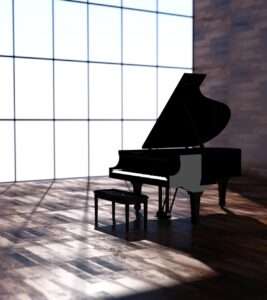 When the last note has faded away, there is a long, long pause. The audience waits eagerly in the foyer. Then, finally, the jury announces the rankings of the three finalists. The award ceremony, sponsored by Telekom, forms the festive conclusion to the concert evening: the 1st prize (€50,000), the 2nd prize (€25,000) and the 3rd prize (€10,000) are officially announced and presented to the winners.
When the last note has faded away, there is a long, long pause. The audience waits eagerly in the foyer. Then, finally, the jury announces the rankings of the three finalists. The award ceremony, sponsored by Telekom, forms the festive conclusion to the concert evening: the 1st prize (€50,000), the 2nd prize (€25,000) and the 3rd prize (€10,000) are officially announced and presented to the winners.
However, for the young pianists, the concert engagements, long-term support and associated network of concert halls and event organisers that come with the top prizes are certainly more important than the prize money. For example, the first two winners will give their debut concerts at the Beethovenfest in 2026 and 2027, respectively, and the winner will go on a concert tour of Germany with the Klassische Philharmonie Bonn in 2026, visiting over 10 cities. Further concerts in Europe are planned. How wonderful! This gives the audience, who have been so excited about the young artists, the opportunity to hear them again and follow their development.

 The so-called ‘Old Cemetery’ is easy to overlook. It is surrounded by walls and squeezed between three main roads and the railway line. Its entrance is at the beginning of Bornheimer Straße, almost directly next to the town hall. When you walk through the gate you enter another world. Graves from times long past lie in the shade of tall trees. Weathered gravestones and rusted wrought-iron crosses dominate the scene. Some are crooked. Many of the graves are obviously no longer maintained and are overgrown. The traffic noise fades into the background and birdsong dominates. It is no wonder that feature films are occasionally shot here. Fog machines are turned on and eerie figures stride through the night. The rattling of the railway is suppressed.
The so-called ‘Old Cemetery’ is easy to overlook. It is surrounded by walls and squeezed between three main roads and the railway line. Its entrance is at the beginning of Bornheimer Straße, almost directly next to the town hall. When you walk through the gate you enter another world. Graves from times long past lie in the shade of tall trees. Weathered gravestones and rusted wrought-iron crosses dominate the scene. Some are crooked. Many of the graves are obviously no longer maintained and are overgrown. The traffic noise fades into the background and birdsong dominates. It is no wonder that feature films are occasionally shot here. Fog machines are turned on and eerie figures stride through the night. The rattling of the railway is suppressed. Another treasure of the Old Cemetery is its trees, some of which date back to the 19th century. This is where problems become apparent: in some places, monument preservation and nature conservation compete with each other, as the tree roots threaten historic graves. Nowhere is this more evident than at the grave of Ernst Moritz Arndt, where the oak tree he planted himself almost 200 years ago is in the process of overturning the gravestones.
Another treasure of the Old Cemetery is its trees, some of which date back to the 19th century. This is where problems become apparent: in some places, monument preservation and nature conservation compete with each other, as the tree roots threaten historic graves. Nowhere is this more evident than at the grave of Ernst Moritz Arndt, where the oak tree he planted himself almost 200 years ago is in the process of overturning the gravestones.
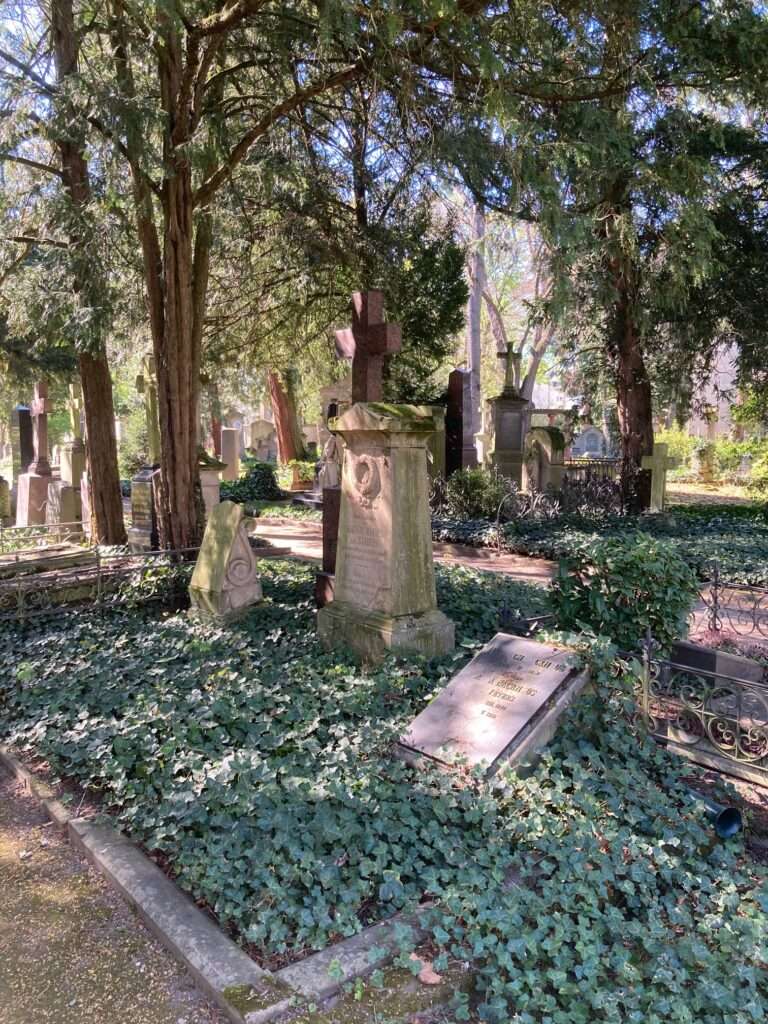
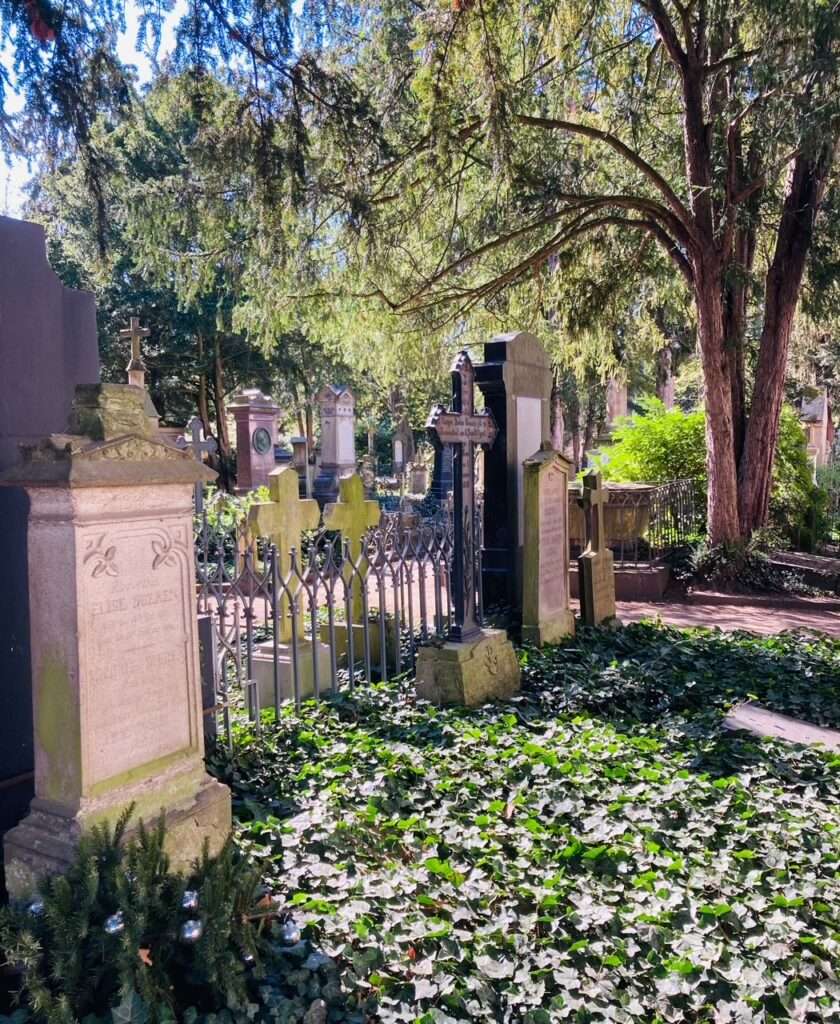
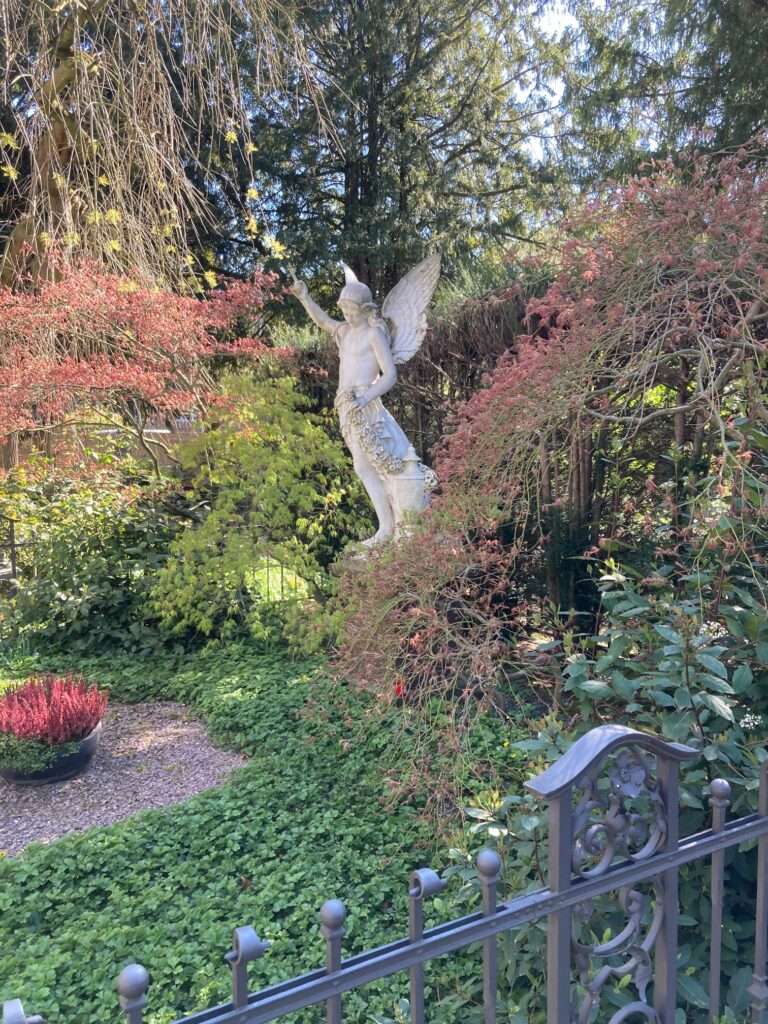

 The competition begins in the concert hall of the Telekomzentrale (Friedrich-Ebert-Allee 140, 53113 Bonn) and is open to the public. Every music lover has the fantastic opportunity to attend the competition. Admission is free, only permitted between each audition. And if you have to wait a little while to get in, that’s no problem, as the competition is livestreamed around the world, including to the Telekom lounge, where you can sit down with a cup of coffee and listen.
The competition begins in the concert hall of the Telekomzentrale (Friedrich-Ebert-Allee 140, 53113 Bonn) and is open to the public. Every music lover has the fantastic opportunity to attend the competition. Admission is free, only permitted between each audition. And if you have to wait a little while to get in, that’s no problem, as the competition is livestreamed around the world, including to the Telekom lounge, where you can sit down with a cup of coffee and listen. When the last note has faded away, there is a long, long pause. The audience waits eagerly in the foyer. Then, finally, the jury announces the rankings of the three finalists. The award ceremony, sponsored by Telekom, forms the festive conclusion to the concert evening: the 1st prize (€50,000), the 2nd prize (€25,000) and the 3rd prize (€10,000) are officially announced and presented to the winners.
When the last note has faded away, there is a long, long pause. The audience waits eagerly in the foyer. Then, finally, the jury announces the rankings of the three finalists. The award ceremony, sponsored by Telekom, forms the festive conclusion to the concert evening: the 1st prize (€50,000), the 2nd prize (€25,000) and the 3rd prize (€10,000) are officially announced and presented to the winners.
Recent Comments